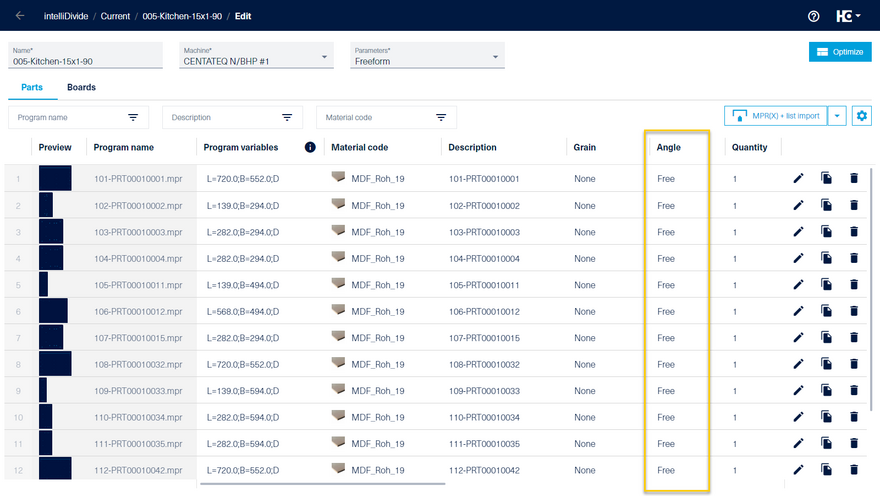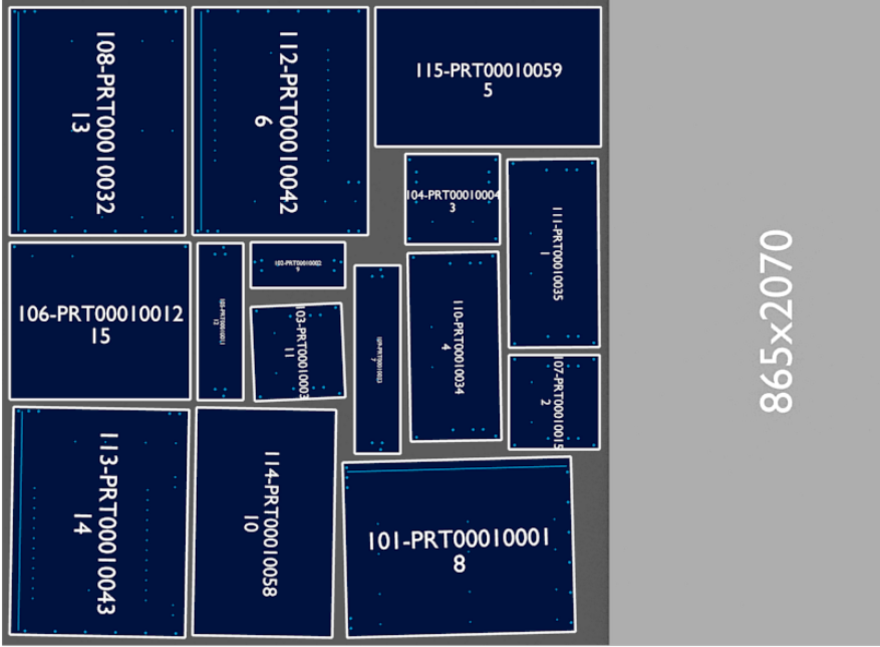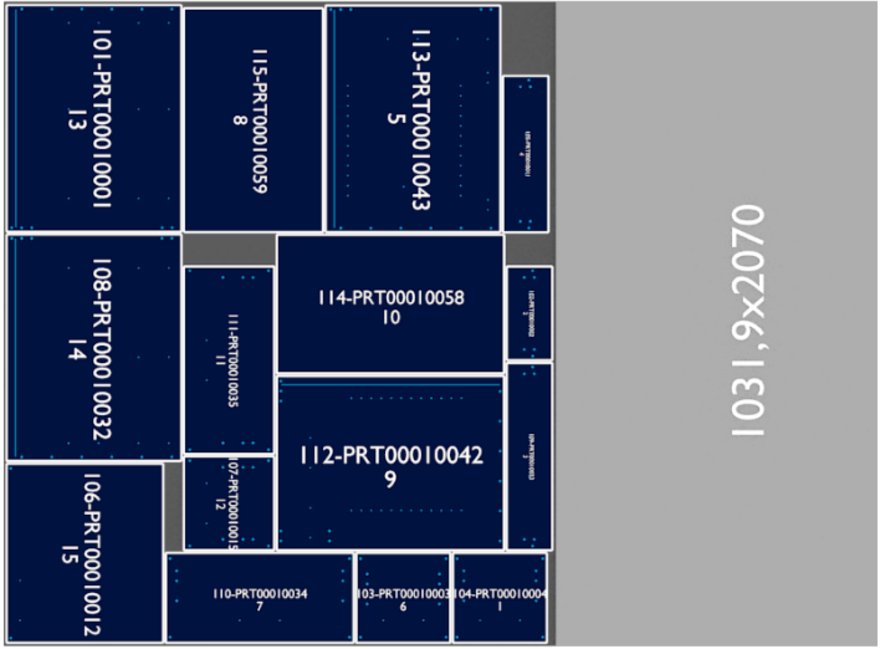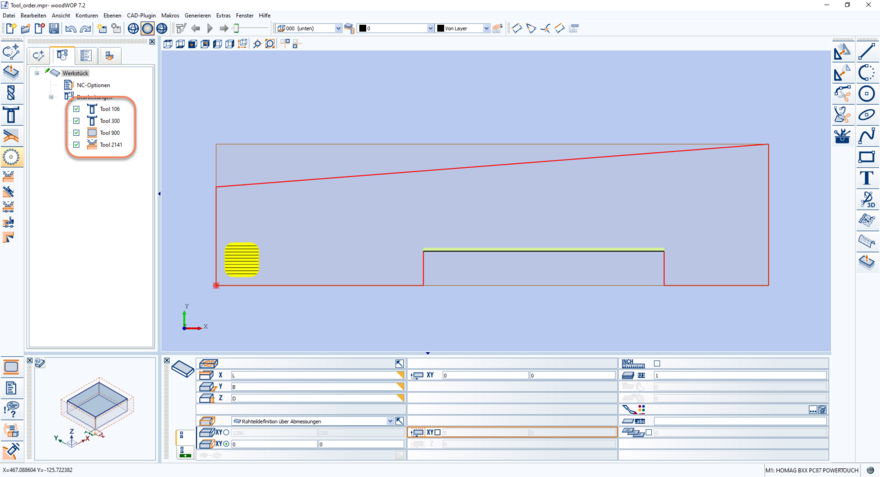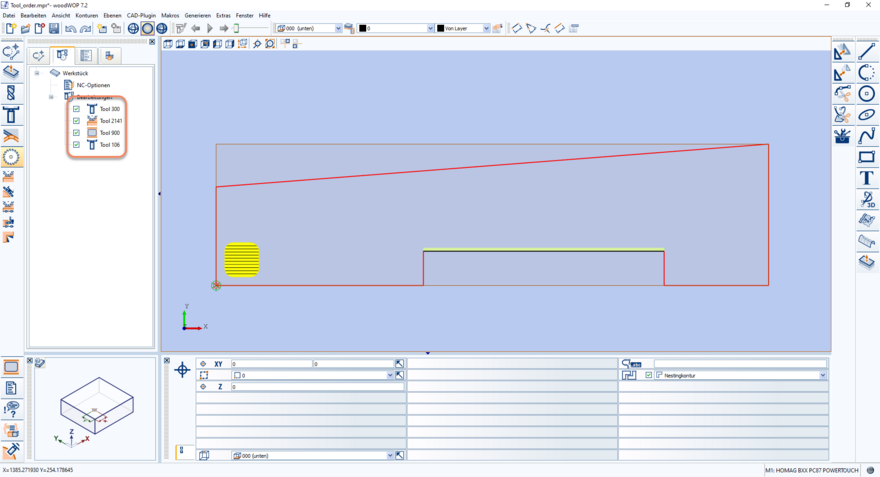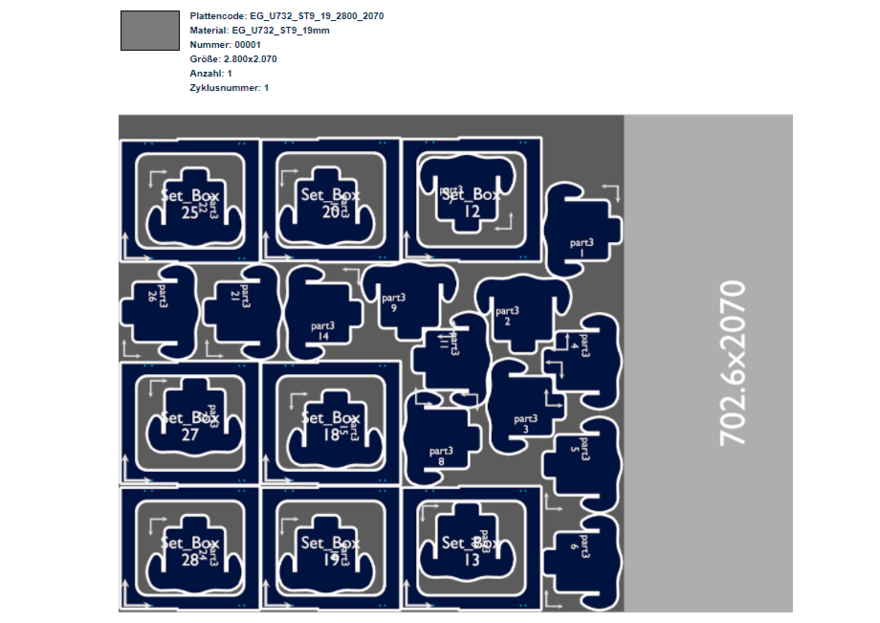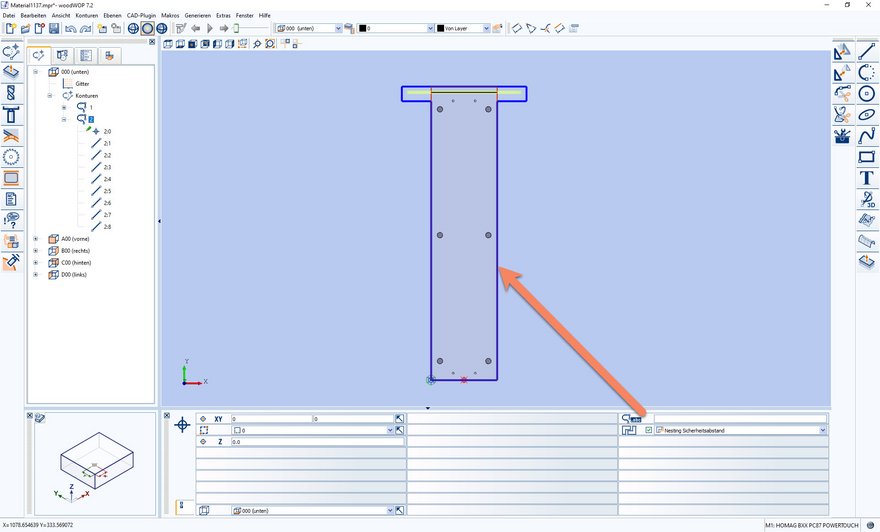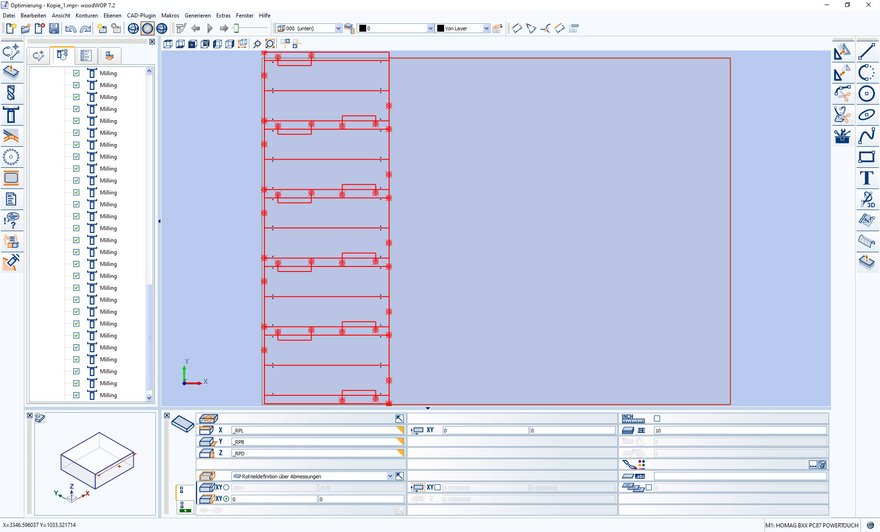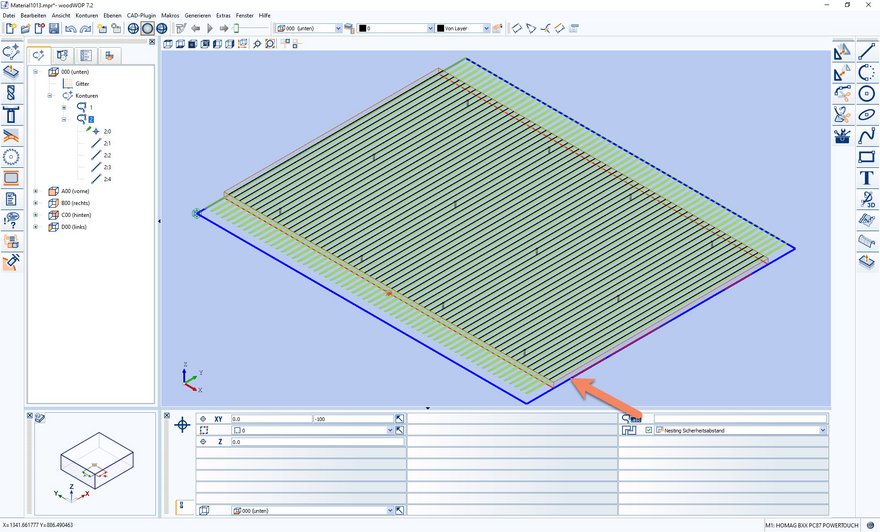intelliDivide Nesting
Requirements for CNC Programs
- MPR and/or MPRX possible
- A closed contour must be available
- woodWOP components must either be embedded or you make the components known to intelliDivide by uploading the entire ML4 directory as a ZIP file via machine parameters
- If there are several contours, the nesting contour must be marked in woodWOP
- If you want to use the option "Reduce nesting residues", the contours in woodWOP must also be marked as nesting contours
- CAM macros can also be nested
- The recommended approach mode is: tangential, flying on/off, approach/departure angel 2 degrees
Rectangular parts lie slightly oblique in the calculated nest
It is possible that during the optimization process, plans are created in which rectangular parts are slightly inclined in the calculated nest. This may occur if intelliDivide Nesting is allowed to position the parts freely on the board.
Sequence of operations in the woodWOP file
The sequence of the woodWOP macros in the calculated nesting plan is determined by the order of the macros in the individual woodWOP files. For safety reasons, the order of the machining operations is never swapped. Here are two examples showing the single part and the result in the nesting plan:
woodWOP tool order variant 1
intelliDivide Nesting - woodWOP tool optimization variant 1
woodWOP tool order variant 2
intelliDivide Nesting - woodWOP tool optimization variant 2
Requirements for part-in-part nesting
intelliDivide offers the possibility of positioning other smaller parts in a cut-out.
In order for a cut-out in a workpiece to be recognised, the contour of the cut-out must be marked as a nesting contour in woodWOP in addition to the outer contour.
Consideration of tool approach and withdrawal movements
If a workpiece contains machining operations in which the tool plunges into the workpiece from the outside, this area can be taken into account via an additional contour. This contour must be marked "Nesting safety distance". The special feature of the nesting safety distance is that it may overlap in adjacent parts until it touches the nesting contour.
Examples: continuous saw groove, lateral or tangential approach with milling, profiling of individual workpiece edges, etc.
Example 1 - Safety contour back panel groove
Example 1 - Nesting result safety contour back panel groove
Example 2 - Safety contour milling/notching
Example 2 - Nesting result safety contour milling/notching
Example 3 - Safety contour grooved panel
Example 3 - Nesting result safety contour grooved panel


